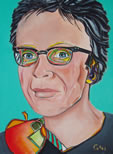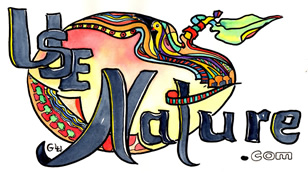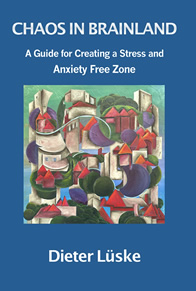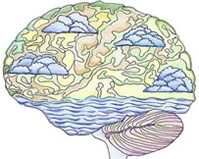useNature.com ... for Brain Plasticity Therapy Concepts
Brain Plasticity - Brain Change
Brain Plasticity Stimuli, Strategies & Concepts
Thought processes, "how Not to worry yourself sick"
Article: Brain Plasticity Stimuli
Brain Plasticity & Brain Change Stimuli
Article by Dieter Luske N.D.-D.C.H.-D.M.H.-D.H
Holistic Therapy Consultant - Gold Coast - Canungra
Author of It happened in the seventies ... and ...
|
How "Not" to worry yourself sick - > Thought processes are stimuli!
Our aim and goal to change Brain Plasticity for a positive outcome relies on "STIMULI".
Consider that Stimuli is virtually everything, be it positive or negative.
The focus of this article is to find positive stimuli application for self help, more complex stimuli, like "deep brain stimulation" is obviously out of the "Self Help" scope.
What is not out of our scope, unfortunately, is "negative stimuli", like accidents, serious diseases or destructive stimuli, like a stroke, or even obsessive destructive thought patterns..
A violent, destructive negative stimuli, would be a stroke or an accident.
In the case of a stroke, the therapy would be directed to find a suitable stimuli to make the brain change in order to find new nerve pathways, new synopses, even new neurons, with the goal of recuperation of the patient, or at least a marked improvement.
Therapy should always start as early as possible. For brain plasticity change purposes, it is not a good treatment strategy to wait and see for some month, in order to map out all destructive changes caused by a stroke or similar.
It does not always need a direct traumatic stimuli to cause a problem, obviously one could be born with a genetic or any other kind of development problem. I those cases, it is the ongoing developmental stimuli which may change the brain into an even more destructive manner. And again, one would look for what type of stimuli to use to get back to homeostasis or a least to a better outcome.
On the other end of the scale, please be aware, that a simple thought or a thought process can cause a major problem. That may sound far fetched, but all it means is that thoughts are stimuli, and if they are repeated over and over they will result in changes within the brain. Interestingly, it is a normal learning response; one can learn a new language as easily as one can learn a new pain, anxiety, compulsive disorder, phobia, or any other problems, you even can learn a digestive problem, all it needs is a "consistant worry".
Worry is a great example of how the brain makes un-real things become real.
If you worry, that you lose your job, and get into all kind of negative worry and mental pictures in your mind about that, you will have a "stress reaction" and a change within your brain, and you probably will lose your job. As soon, as brain changes or stress reactions happens, the "worry" has become real, even so it is just a negative thought pattern. In some people that could even create an obsessive compulsive disorder. These things are real, they are causing real brain changes, even so they are only negative thought patterns.
Why is that happening?
Simple, the brain can't differentiate between real or imagined.
"For the brain, ...... thoughts are always real".
Having established, why thoughts are real, and therefore are stimuli for brain change, we have created now the possibilities of using thoughts to create a positive outcome, which leads us to Self Help Brain Plasticity.
A thought, with a positive purpose, is called an "Affirmation".
And, yes, Affirmations do work, because they work the same as worries do, but think about it for a moment, how much emotion do you put into your worries, and how much do you put into your Affirmation? Worries work, because they become "intense". We talked about intensity before, and established that it is absolute vital for the success of Brain Plasticity based Therapy.
Affirmations will work, if you apply the same "intensity" that you apply to your worries, and for the same time span, or a least for 6 weeks.
I am also a great fan of using Affirmations in different forms:
Example - Basic General Affirmation:
- Day by day, in any way, I AM getting better and better.
- Day by day, in any way, YOU ARE getting better and better.
- Day by day, in any way, S/HE IS getting better and better.
- Day by day, in any way, "insert your name" is getting better and better.
Third person affirmation can become very powerful, particulary if you as a child often had "negative affirmation" drummed into you; maybe something like; "you will never learn this", "you can't do that", etc..
To use an affirmation as your personal brain change therapy, you have to create a suitable affirmation stimuli. Having found a suitable affirmation, you could combine that with a general affirmation, such as "I love and accept myself", or "Day by day, in any way, I am getting better and better", or similar.
Always use all the different forms, or the one which you feel has the most impact. An affirmation always has to be a positive statement, by example, " I will not get sick", will not work, the brain does not understand negative instruction. That affirmation needs to be changed to "I am getting healthy now".
The best way to use your affirmations is to say them out loud, and with feelings; realy mean it, and use plenty of repetition. Use phrases such as "day by day, I am getting better and better,' and always use the present tense, such as "I am creative now," and Avoid using "I will be creative," as this could mean in twenty years time.
An affirmation prescription is: use at least 3 times daily, if possible much more often, and use the affirmations instead of a worry or negative thought pattern.
Similar to an affirmation or worry, but even stronger is a belief. Make sure you have believes that support you, and discard or re-formulate believes which could be detrimental to your health. "I never will get better", is as much a believe as it is an affirmation or worry ... you need to cut those out, and replace them with positive believes or affirmations.
Why do affirmations often fail?
An affirmation relies on the patient to become an active patient, motivated to claim back responsibility for their own health.
Unfortunately, to stick to a certain therapy process with great effort for a prolonged time, needs a lot of motivation, perseverance and discipline.
Most patients need extra coaching to stick to their therapy strategy. However, there are other ways to reinforce motivation and compliance, such as NLP techniques or straight out Hypnosis.
NLP in relation to Brain Plasticity will be discussed later ...
This principle, that the therapy outcome relies on the patient, makes it impossible to predict or "double blind test" a specific treatment.
Therefore the scientific research and prove by MRI's have made it possible to focus much more specific on Brain Change and therapy outcomes.
What other "stimuli" are possible in a self help situation?
We will look into:
-
All natural therapy modalities, in regards to reorganise their application for brain plasticity.
I will start with Acupuncture, which up to a certain degree could be used as self help.
Acupuncture, will also be researched in relation to needling, acupressure and laser acupuncture. -
Neuro Linguistic Programming - Self help techniques may be a major influence for achieving compliance, motivation, and permanent change. Techniques like setting anchors, talking to your inner self, re-framing and more.
-
Music / Sound - ours ears convert sound frequency patterns into patterns of electrical energy, stimulating Neurons to fire in sync. This effect can re-shape the brain into desired brain circuitry. - There is already a Program out, called the "Listening Program".
-
Conscious Walking - That may sound strange, but all it means is to put awareness into each movement associated with walking, and possibly change walking pattern as well. Can also be used as exercise, try walking, and each time your heel hits the ground and your weight moves to your toes, curl up the toes as if you wanted to propel yourself forwards.
-
Touch and movement - from specific massage techniques, pressure, tapping, connective tissue stretching to Feldenkrais, Thai Chi and Yoga.
-
Meditation practices, including relaxation - visualisation - imagination - mantras - dancing.
- Learning - General brain change, could be called Prevention, learn anything, from a new language to juggling.
There are also Brain training web-sites which are very good, for ongoing programs you need to pay.
and once again .... because I love it and always believed it, it has now been proven by MRI's, that placebo is real, it will change the brain.
... the next article is on:
A short summary of Norman Doidge's therapy outlines, as in the following books:
- The Brain That Changes Itself - by Norman Doige, MD
- The Brain's Way of Healing - by Norman Doige, MD
... or go back to the main Brain Plasticity Menu
Please contact me directly for more info or Research Participation: Dieter L. - Editor
* Disclaimer - Any general advice given in any article should not be relied upon and should not be taken as a substitute for visiting a qualified medical Doctor.
 Dieter Lüske - Editor
Dieter Lüske - Editor
N.D.-D.C.H.-D.M.H.-D.H
Happy Brain - No Pain
Brain Plasticity T-shirts and other printed products.
Buy Now
It happened in the seventies
A Memoir of Love, Colliding Worlds and a House on a Hill
Intriguing story of personal risk-taking, self-discovery and profound change.
Dieter Luske
author . writer . editor
FB - Support Groups
Holistic Brain Plasticity
© 1998 - 2020 useNature.com: Australia - Natural Health and Lifestyle Information Services - Books
Site Map - Terms / Privacy - Global Health | Free Alpha Music | Photography | Natural Links |




